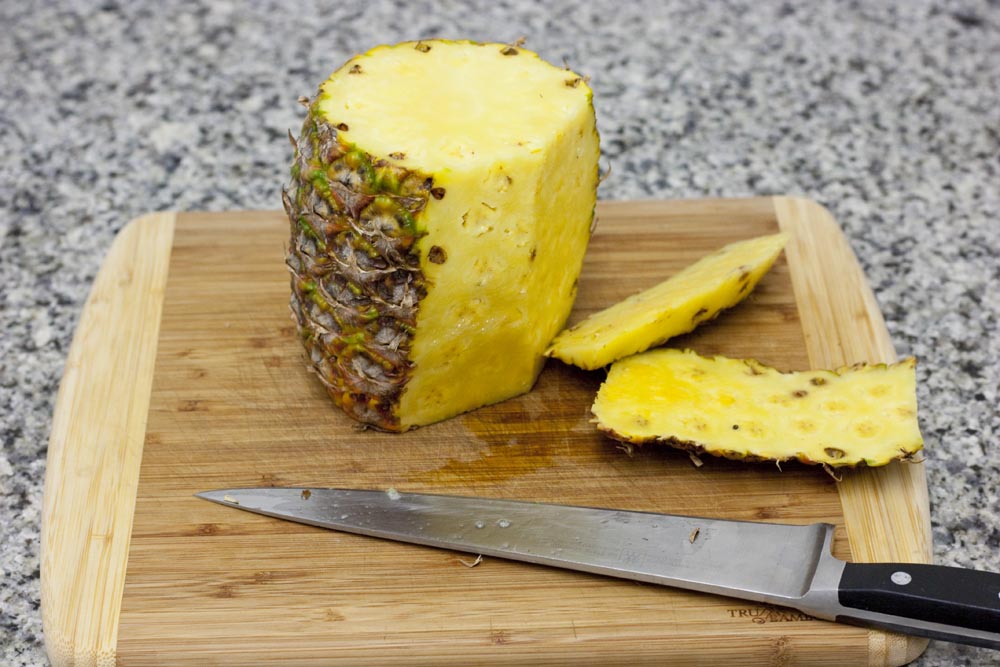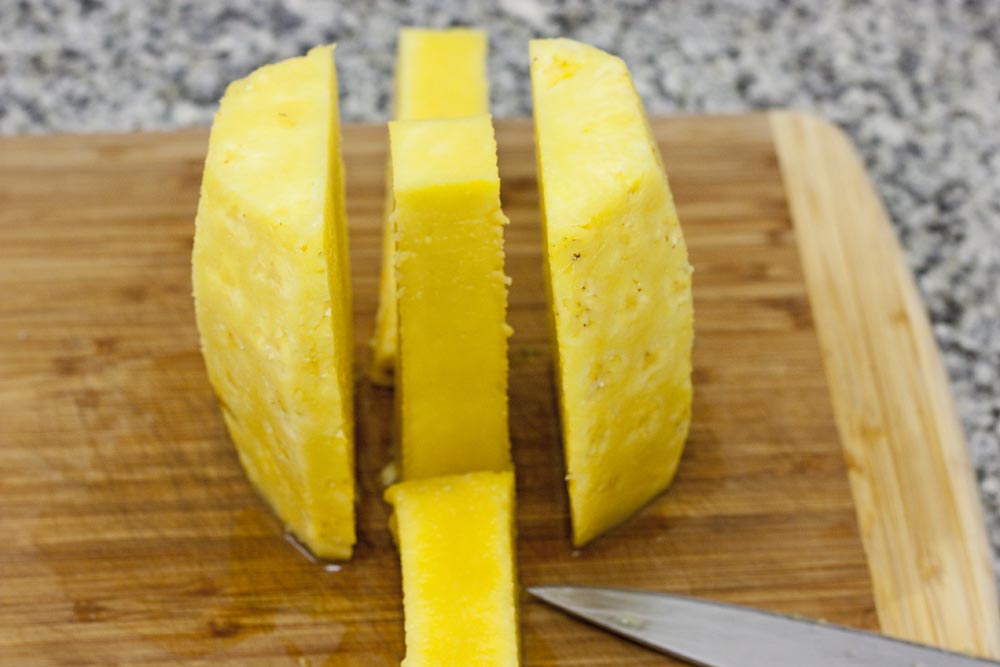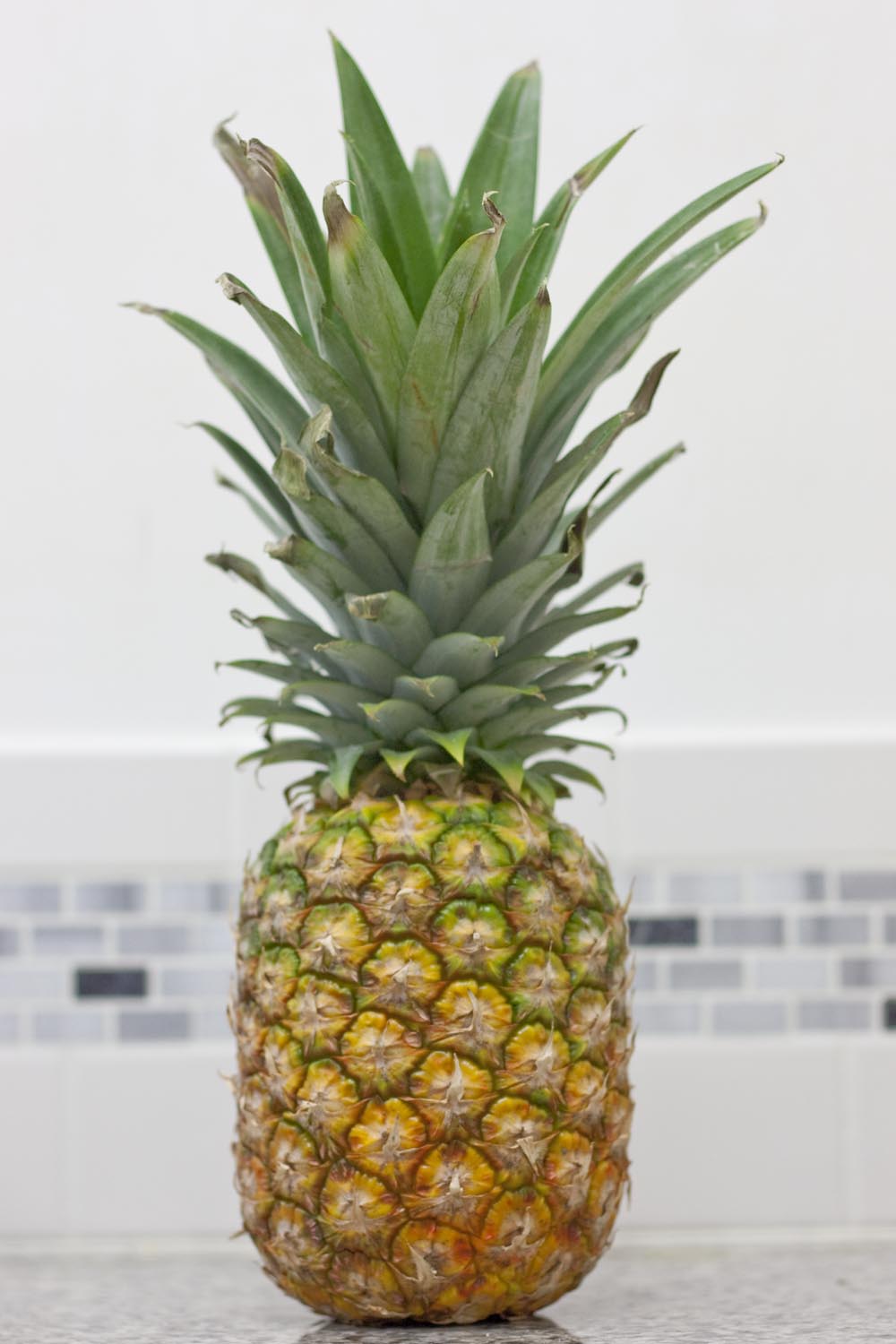The pineapple is a member of the bromeliad plant family. They originated and grew wild in the South American countries of Paraguay and Brazil. From there, pineapples were spread throughout the rest of South America and into the Caribbean and Mexico, where they were cultivated by the Aztecs and Mayans. Pineapples are now grown commercially in Australia, the Philippines, Hawaii and parts of Southeast Asia and Northern Africa. They were first brought to Europe by Columbus and to Hawaii by the Spanish.
The fruit of pineapple develops from many individual berries along a central stalk. These berries merge into one large fruit as they grow and ripen. The points on the outside of the pineapple are what remain of the the original flowers at the end of this process. The brown pits inside the skin that are cut away before eating are the shafts used by the berries for pollination of the fruit.
Bromelain is one of the key enzymes making pineapple such an important part of a healthy whole food diet. One of bromelain’s properties is breaking down proteins. This ability makes pineapple an important digestive aid by easing the strain on the stomach and intestines. It also makes pineapple a good tenderizer for meats when used as part of a marinade before cooking. Bromelain also acts as a blood thinner and anti-clotting agent in our bodies by helping to break down the protein fibrin, which helps blood cells clump together to form clots. The enzyme bromelain helps thin mucus as well as blood, easing difficult breathing due to asthma and other respiratory conditions. This ability to prevent clotting can also prevent bruising and swelling in the body. Bromelain has anti-inflammatory and immune system boosting properties, too.
Though there is some bromelain in the body of the fruit, most is concentrated in the hard central core and the leaves. For a full dose of this healthy enzyme, always save the core. Cut it into small pieces and add it to smoothies, marinades and cooked dishes. Pineapple cores can be frozen and used as needed.

To get a pineapple ready to eat, start by cutting off both ends. Then cut off the skin just deep enough to remove the brown pits.
Pineapple is also very high in other nutrients. Vitamin C and copper, both strong antioxidants within the body, help prevent free radical damage to cell DNA. A high concentration of manganese helps with cell repair and bone growth. Pineapple also supplies plenty of folate and vitamins B1 and B6. Plenty of dietary fiber helps slow sugar absorption(and resulting insulin response) and assist regular elimination of wastes(reducing chances of bowel cancer).

Finish pineapple preparation by cutting down along the hard central core, leaving four pieces of fruit. Save the core for smoothies and cooking as a great source of the enzyme bromelain.
Like other fruits, pineapple can help protect against vision loss caused by macular degeneration. The way this process works is still being studied, but it doesn’t seem to be connected to the often cited phytonutrients. This might be another of those synergistic effects common to whole foods, where the effect of the whole package of nutrients is greater than any single compound can produce in isolation.

